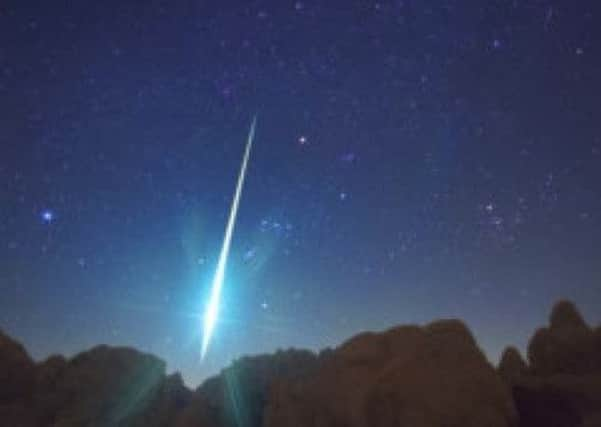Annual perseid Meteor Shower Promises a fine display


The annual Perseid meteor shower is one of the best and most reliable meteor showers of the year.
It peaks every year around August 12 and 13, and under ideal conditions produces a maximum frequency of meteors, or zenith hourly rate, up to around 100 meteors per hour.
Advertisement
Hide AdAdvertisement
Hide AdThe weather is still reasonably mild, and the Moon, whose light often drowns out many faint meteors, is waning towards New Moon on the 14th and so will not interfere with the peak of this year’s shower.
Meteors, which are sometimes called “shooting stars” - or “fireballs” if very bright - are produced by small dust particles called meteoroids, with sizes ranging from millimetres up to centimetres or more, as they collide with the Earth’s atmosphere at speeds of typically several tens of kilometres a second,and burn up.
The regular annual meteor showers, such as the Perseids, are produced by streams of meteoroids in the inner solar system that happen to be moving on orbits that intersect that of the Earth. As the meteoroids run into the Earth’s atmosphere, they burn up in the mesosphere at heights typically between 80 and 100 km above the ground.
The meteor shower occurs at a specific time of year, corresponding to when the Earth in its annual revolution around the Sun crosses the Perseid meteoroid stream.
Advertisement
Hide AdAdvertisement
Hide AdThey are called Perseids because they emanate from a point in the sky, known as the radiant, in the constellation of Perseus.
Those who wish to see a Perseid meteor should select a clear, dark observing site with as little moonlight or artificial light pollution as possible. During August, soon after dark, the constellation Perseus can be seen rising low in the North East. Although Perseid meteors will appear to originate from this general direction, known as the radiant, the actual shooting star can be seen in any part of the sky. For example, you may look at an angle of about 45 degrees away from the radiant, perhaps overhead or towards the north or east, whilst keeping the radiant near the edge of your field of view. If possible, look away from any nearby light pollution.
Always allow time for your eyes to become accustomed to the dark, and expect to wait 20 or 30 minutes before seeing your first meteor. To avoid fatigue, wrap up warm and recline in a comfortable chair under a rug or sleeping bag to avoid
the cold. Take time to enjoy your view of the dark, night sky.